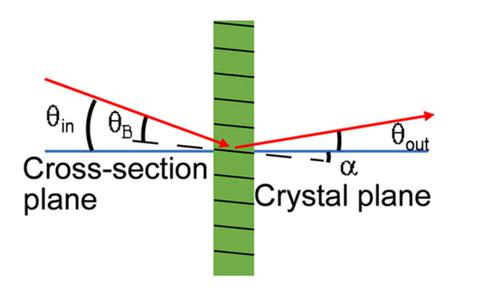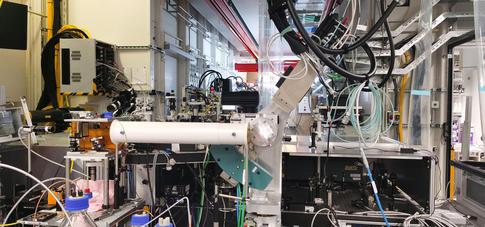XFEL: A pioneering spectrometer for hard X-rays
A pioneering spectrometer for hard X-rays

To unravel the secrets of the world of atoms, molecules and materials in general, scientists often use special measurement devices known as spectrometers. They work by recording the light that objects emit. From the way in which the objects do that, researchers learn a lot about the physical processes that take place in the materials. Particularly revealing is the research with X-ray light, which penetrates deeply in matter and provides information specific to each atomic species. This light is invisible to our eyes, but can be detected and measured using special spectrometers.
The main components of these devices are usually extremely precisely cut crystals made of silicon or germanium. Traditionally, the X-ray spectrometers work in what is known as Bragg geometry: The X-ray light hits the crystal and is then diffracted by the atomic planes parallel to the surface, similarly as mirrors reflect visible light. From the direction and intensity of the scattered radiation, the researchers can draw conclusions about the electronic properties of the materials they are analysing.
A unique characteristic of European XFEL is the ability to provide X-ray light with very high energy. However, as the energy of the X-rays increases, the interaction with the crystals becomes smaller, making the measurements challenging. In this high photon energy regime, a large proportion of the X-ray light simply passes through the crystal unused, which is why the performance of X-ray spectrometers using these analysers, known as Johann or Von Hamos spectrometers, decreases rapidly with increasing X-ray energy. They usually only work well up to a photon energy of around 15 kiloelectronvolts (keV).

The new Laue spectrometer in position at the FXE instrument of European XFEL. The crystal analyzer in the centre of the image is clearly visible.(photo: European XFEL)
The newly developed device called High Energy Laue X-ray Emission Spectrometer (HELIOS) is now installed and available to all users at European XFEL. It provides an extremely high precision of about 1.2 x 10-4 at a photon energy of around 18.6 keV. Compared to conventional spectrometers, it achieves a signal strength that is 4 to 22 times higher. This makes it possible to detect particularly interesting electronic transitions in so-called 4d transition metals, which are otherwise very difficult to measure. The 4d transition metals include technically important elements such as niobium, molybdenum, ruthenium, palladium and silver.
“The new spectrometer opens up completely new spectroscopic possibilities at high X-ray energies, only possible at the European XFEL,” Lima says. Examples include the measurement of photocatalytic properties of nanoparticles containing 4d metals, research into dye sensitisation for solar cell applications, and the investigation of strongly correlated materials that could be used as superconductors or as battery cathodes or anodes for efficient energy storage.
Original paper:
A high-energy Laue X-ray emission spectrometer at the FXE instrument at the European XFEL, Frederico Alves Lima et al., Journal of Synchrotron Radiation, https://doi.org/10.1107/S1600577525001389
[1] FXE stands for “Femtosecond X-ray Experiments”, where femtosecond relates to extremely fast processes in periods of less than a quadrillionth (10-15) of a second.
